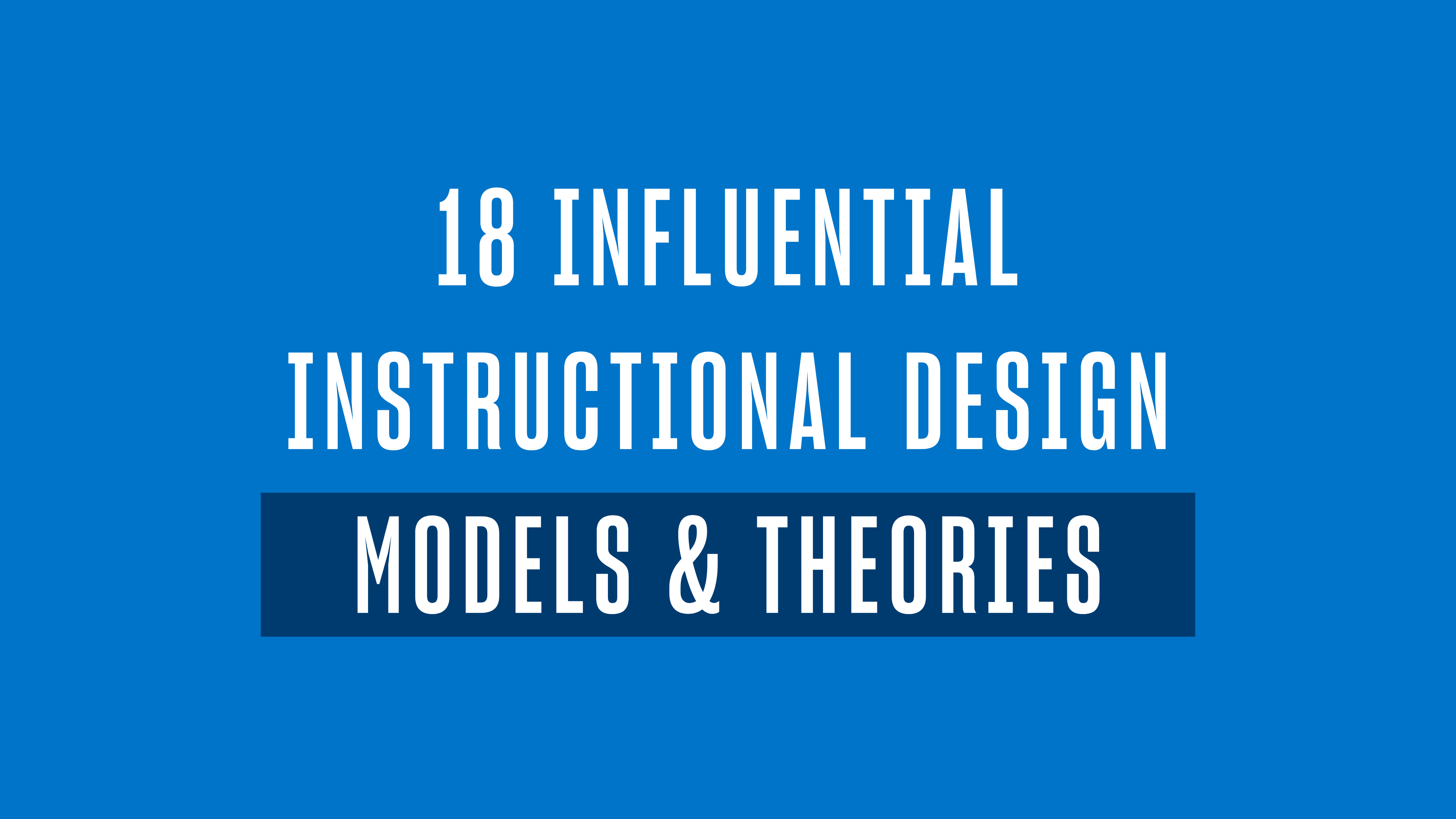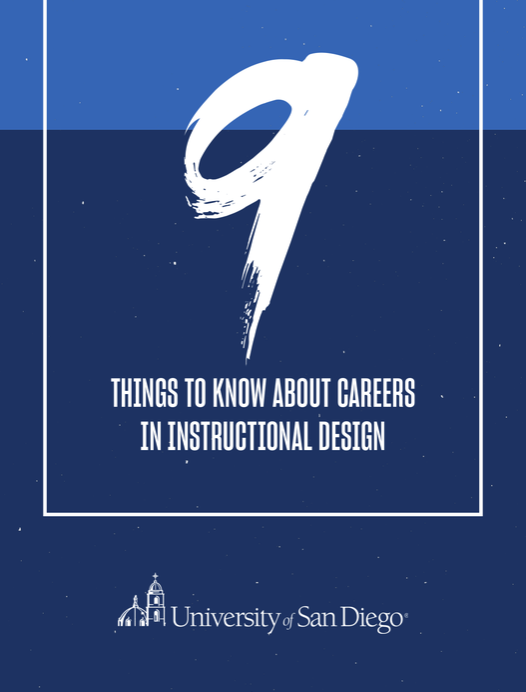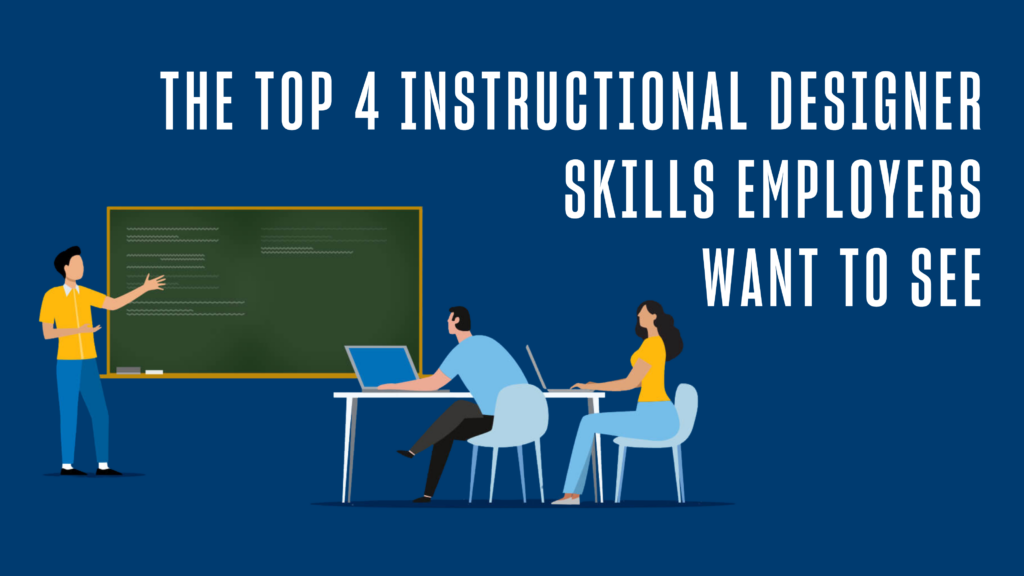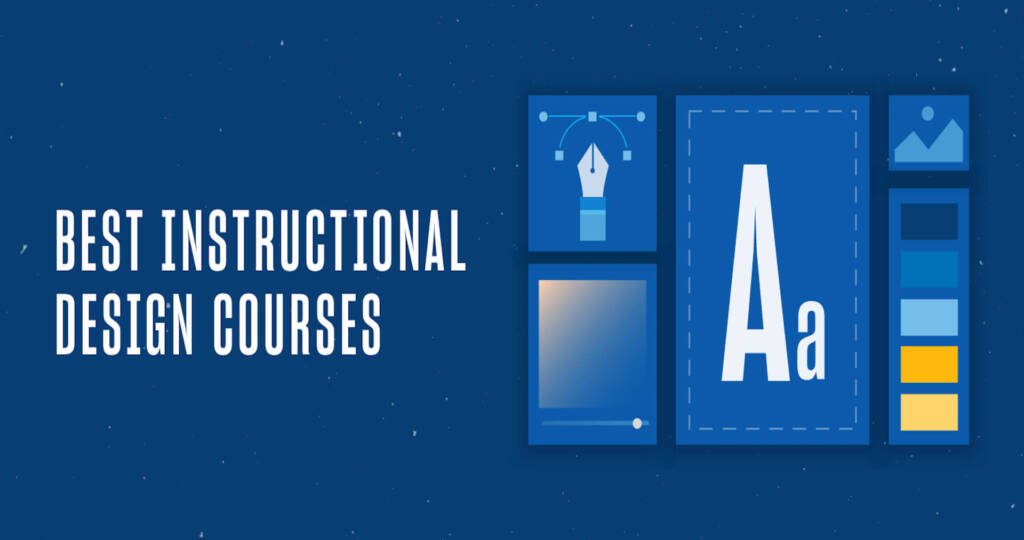Why Learning Models That Date Back to WWII Are So Important Today
When it comes to instructional design models and theories, ADDIE is the most widely recognized name among professional learning designers (more on “her” in a moment). But there are also many other notable names and theories that are highly relevant to current and aspiring instructional designers, as well as anyone who is curious about learning.
From Bloom’s Taxonomy and Gagné’s Nine Events of Instruction to Merrill’s Principles of Instruction and countless others, all of the theories and models related to instructional design have at least one thing in common: They are part of the evolution of humankind’s ongoing exploration into the science of how people learn.
History of Instructional Design Models
The field of instructional design officially dates back to World War II, when America’s war effort demanded a highly effective and methodological approach to training vast numbers of people. In the years following the war, new efforts to identify the underpinnings of how people learn and use such insights to create effective learning frameworks emerged (see more below).
Today, instructional design is at the heart of a vitally important trend in education and training. Formalized instructional design processes are being utilized across higher education, the corporate world and government to help people learn essential information and skills quickly, effectively and at scale. These processes are increasingly found in technology-enhanced virtual environments, in addition to more traditional face-to-face instruction.
Why Use an Instructional Design Model
The instructional design process, regardless of which model is used, helps ensure that instruction is created efficiently and that it is grounded in principles that connect to our best understanding of how people learn.
Theories about how people learn, and instructional design models based on those theories, help instructional designers develop materials that inspire effective and engaging learning experiences. These learning experiences enable people to acquire and retain new knowledge and skills.
A Closer Look at Several Influential Instructional Design Models & Theories
There are dozens of instructional design-related theories and models that have come to the forefront in the post-war years. Some of the most notable include:
Psychologist B.F. Skinner’s influential 1954 article “The Science of Learning and the Art of Teaching” and his exploration of what he called “operant conditioning.”
Bloom’s Taxonomy — According to EdGlossary, Bloom’s Taxonomy is a “system used to define and distinguish different levels of human cognition, i.e., thinking, learning and understanding” published in 1956 by a University of Chicago team headed by Benjamin Bloom. Later revised by scholars led by two Bloom colleagues to be as useful as possible to educators, it posited a cognitive model that includes six different classification levels: Knowledge, Comprehension, Application, Analysis, Synthesis and Evaluation.
Gagné’s Nine Events of Instructions — published in the 1965 book “Conditions of Learning” by Robert Gagné, an educational psychologist who was a key figure in WWII training efforts. Gagné identified five major categories of learning — verbal information, intellectual skills, cognitive strategies, motor skills and attitudes. He also famously theorized that there are nine instructional “events” that are instrumental in the learning process (see video):
- Gaining the attention of the learners
- Informing them of the objectives
- Stimulating recall of prior learning
- Presenting the stimulus (learning materials or content)
- Providing learning guidance
- Eliciting performance (through practice)
- Providing feedback
- Assessing performance
- Enhancing retention and transfer (of knowledge and skills)
Merrill’s First Principles of Instruction — developed by education researcher David Merrill, whose principles start with the idea that “truly effective learning experiences are rooted in problem-solving” and continue with fundamental steps to accomplish this:
- Demonstration
- Application
- Integration
- Activation
Speaking about his methodology in a video, Merrill asserts that educators must “show vs. tell,” offer meaningful opportunities for “having the student actually do what they’re learning” (rather than “ask what they’ve learned,” as is the case with many tests) and “[do] this in the context of a real-world problem.”
Which brings us to ADDIE, whose familiar acronym stands for the five key stages of the instructional design process: Analysis, Design, Development, Implementation and Evaluation.
Developed by Florida State University’s Center for Educational Technology in the 1970s, ADDIE is as vital as ever to the field of instructional design today. Many other subsequent approaches to learning design build upon or adapt core elements of the ADDIE model. (For a more in-depth review of ADDIE’s core principles, see InstructionalDesign.org.)
Despite recent trends toward more agile, rapid prototyping of instructional materials, ADDIE is described as “the best way to learn how to create an online course”; with one leading instructional design blogger asserting that, “Modern learning and development professionals should exhibit mastery in each of [its] 5 phases.”
ADDIE is arguably the most important instructional design model because it provides a universal framework for ID work. All instructional design models follow some variation of a three-step process that includes:
- Analyzing a situation to determine the instructional need
- Producing and implementing an instructional solution, and
- Evaluating the outcomes of implementing the design
SAM Model – where ADDIE is slow and steady, SAM (short for Successive Approximation Model) is “fast and furious.” It is a leading example of the industry trend toward iterative design and delivery frameworks now being used to meet the need for speed in the fast-growing world of instructional design. Its three key phases include:
- Preparation
- Iterative design
- Iterative development
According to eLearning Industry, “SAM serves as a rapid design and development model that uses shortened agile steps to create holistic and flexible projects,” enabling designers to “test their course early and often and be agile to revisions based on user feedback.”
Expanded List of Instructional Design Models
Why are there so many instructional design models, frameworks and theories? Well, perhaps it is because there is no “one right answer” to the complex and multifaceted question of how different learners most effectively acquire and retain different types of knowledge and skills.
Here is a quick rundown of some additional instructional design-related models and theories, with links to resources for further study:
- Dick and Carey Instructional Design Model [WorldOfWork.io]
- ASSURE (Analyze learners | State standards & objectives | Select strategies, technology, media & materials | Utilize technology, media & materials | Require learner participation | Evaluate & revise) [InstructionalDesign.org]
- Backward Design (Understanding by Design) [CultOfPedagogy.com]
- Kemp Design Model [InstructionalDesign.org]
- The Kirkpatrick Model [MindToools.com]
- Situated Learning Theory [IDToolbox.com]
- Anchored Instruction Model [InstructionalDesign.org]
- Cognitive Apprenticeship [IDToolbox.com]
- Social Learning Theory: Albert Bandura [GerardFriel.com]
- Andragogy: Malcolm Knowles [InstructionalDesign.org]
- Jean Piaget’s Theory & Stages of Cognitive Development [SimplyPsychology.org]
- Sociocultural Learning Theory: Lev Vygotsky [eLearningIndustry.com]
- Zone of Proximal Development and Scaffolding: Lev Vygotsky [SimplyPsychology.org]
How to Select an Instructional Design Model
There are three important points to make here.
First: In the real world, choices about which instructional design models to use are very often driven by constraints such as time, budget and project scope. Though sometimes a more methodical, linear approach may be desired, pivoting toward a more agile, rapid, iterative process may be necessary.
Second: A comprehensive understanding of ADDIE — as an overall process and why each element is important — will ensure that an instructional designer is on the right track, since that fundamental knowledge will equip them to adapt to the demands of each project or situation.
Third: This is technically not a “how to select a model” piece of advice, but more of an essential concept to keep in mind no matter what model or theory you use to frame a project. The importance of bringing empathy to each instructional design or learning experience design project cannot be overstated — specifically, empathy for the group of learners for whom your instructional materials are intended. Empathy maps are a tool that many instructional designers use to develop human-centered insights that connect to a “put yourself in the learner’s shoes” kind of approach.
FAQs About Instructional Design Models
Q: What does ADDIE stand for?
A: ADDIE is an acronym that stands for the five key stages of the instructional design process: Analysis, Design, Development, Implementation and Evaluation. It is arguably the most important and influential instructional design model.
Q: How is SAM different from ADDIE in instructional design?
A: SAM (short for Successive Approximation Model) is a leading example of the industry trend toward more rapid, iterative design and delivery frameworks now being used to meet the need for speed in the fast-growing world of instructional design.
Q: Why are instructional design models important?
A: Following an instructional design model grounded in principles that connect to our best understanding of how people learn is essential to create effective and engaging learning experiences that enable people to acquire and retain new knowledge and skills.
Q: How old is the field of instructional design?
A: Instructional design traces its roots to World War II, when America’s war effort demanded a highly effective and methodological approach to training vast numbers of people. Now increasingly referred to as learning design or learning experience design, today it is a fast-growing field with new career opportunities in higher education, government and the business world.
Q: Is a master’s degree needed to become an instructional designer?
A: Not necessarily, but one recent survey indicates that some 87% of instructional designers have earned a master’s degree. Among the many benefits of earning your master’s in learning design from the University of San Diego: You will build practical skills that are widely sought after across nearly all industries, you will create an online portfolio you can use to showcase your skills to potential employers and you will build a professional network that supports lifelong learning in this fascinating and fast-growing field.




![The ADDIE Model for Instructional Design [+ Pros/Cons & FAQs]](https://onlinedegrees.sandiego.edu/wp-content/uploads/2022/09/ldt_blog_addiemodel-1024x576.png)
